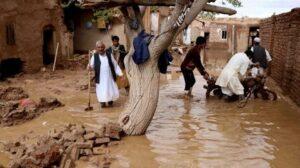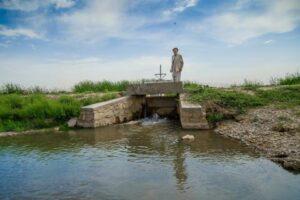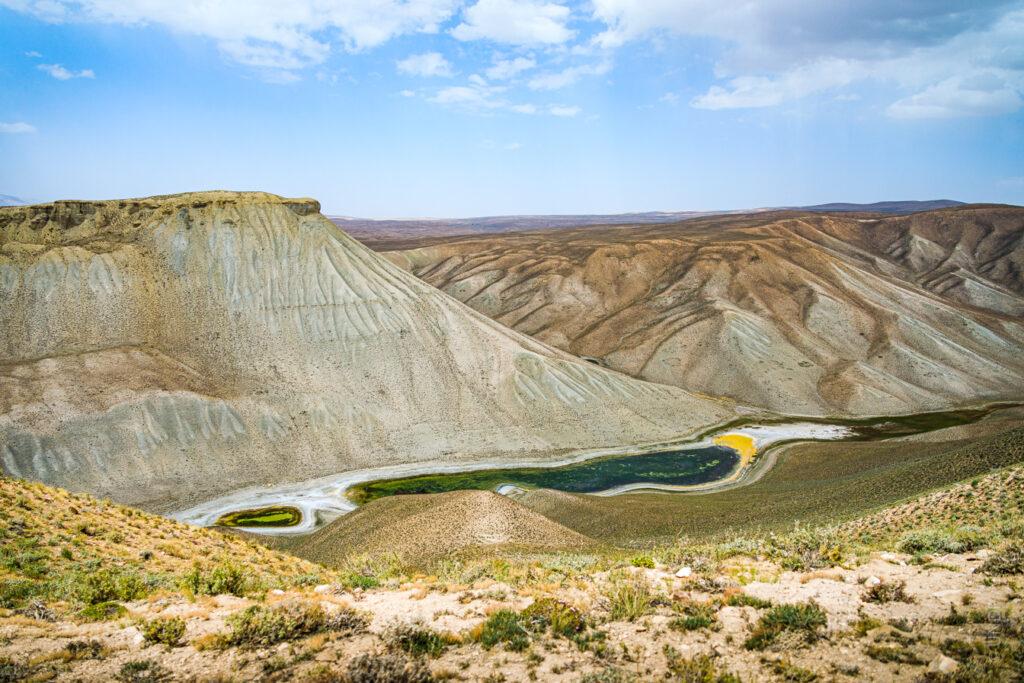By Stephen Rodriques
Imagine living under the constant threat of droughts, floods, extreme temperatures, and land degradation. Threats that loom over livelihood, food security, and well-being. How would you cope if climate disasters forced you to abandon your job, and your home, every year?
This is the harsh reality for millions of Afghans, who are among the populations most vulnerable to climate change. That is why we must act now to support Afghanistan in building its climate resilience and securing a sustainable future for its people and the planet.
Located in landlocked south-central Asia, with a diverse population of approximately 38 million people, Afghanistan is a country that has faced much political turmoil in recent years, along with sanctions and other limitations, that threaten to undermine years of progress.
It ranked 6th among countries most vulnerable to climate change and fourth in overall disaster risk in 2023. It has experienced a temperature increase of 1.8°C since 1950, surpassing the global average of 1.5°C. This change in temperature has wreaked havoc on agriculture and the agricultural value chain – the country’s economic backbone – and has exacerbated the effects of conflict, poverty, and displacement.

It is the poorest and most vulnerable who are hardest hit by the climate crisis. Research by the United Nations underlines Afghanistan’s intricate challenges highlighting droughts, floods, land degradation, and declining agricultural productivity as potent threats. According to the UN, more than 80 percent of the population depends on natural resources for their livelihoods, yet only 12 percent of the land is arable, and only 6 percent is currently cultivated. Climate change threatens to reduce the availability and quality of water, soil, and crops, putting millions of lives at risk of hunger and malnutrition.
Floods, a recurrent hazard, incur a staggering $400 million in economic losses annually, impacting an average of 335,000 people due to inadequate infrastructure. In addition, drought-induced displacement has reached alarming levels, the 2018 drought impacted over two million people and caused massive displacements, disproportionally impacting the poorest Afghans – 85 percent of the population living in precarious conditions with limited resilience to climate hazards.

As we approach CoP28 in Dubai, we have a crucial opportunity to address the impact of climate change and strengthen climate resilience in Afghanistan. This is not merely a moral duty but also a strategic necessity for both regional stability and global security.
To tackle these multifaceted risks, a joint approach among United Nations agencies is essential as they continue their vital work in the country, against the backdrop of the complex political situation.
From 2022 to 2023, the UN Development Programme (UNDP) has been conducting community programmes in 18 districts across 12 provinces, rehabilitating water infrastructure, irrigating over 225,000 hectares of farmland, and safeguarding 89,000 hectares from flooding. Moreover, 221 disaster action plans were developed to enhance preparedness and response strategies, showcasing our commitment to addressing the challenges Afghan people face.
Despite these successes, challenges persist. The political and security situation in Afghanistan hampers access and operations, while insufficient and inconsistent funding for climate action impedes progress.
However, a key question persists: How do we fortify climate resilience in Afghanistan? UNDP, together with other UN agencies is working on a comprehensive, innovative framework with the goal to “Build the resilience of the Afghan people and communities at risk, affected and displaced by climate hazards and climate change” and focusing on four pillars:
Climate and disaster risk management in communities to assist them in assessing and reducing their risks, preparing and responding to climate hazards, and accessing timely early warning information.
Resilient agriculture, livelihoods, and MSMEs to support farmers and entrepreneurs in adopting climate-resilient practices, technologies, and skills, and facilitating access to financial and market opportunities.
Energy and climate-resilient infrastructure to help households and communities in accessing sustainable energy and improving their roads, buildings, and facilities.
Water resource and ecosystem management to manage and conserve water resources and ecosystems, protecting them from floods and droughts.

Afghanistan has experienced its most substantial climate-induced displacement since 2021, with 2.3 million people forced to leave their homes due to drought, to counteract this trend, there is a need for immediate actions to build resilience.
Ensuring climate justice and inclusion are at the heart of our collective efforts to help vulnerable Afghan communities to become more climate-resilient.
We have the tools and data, as well as the international and national frameworks and agreements to guide our actions. Now we must seize the opportunity, to act collectively to fortify Afghanistan’s climate resilience and secure a sustainable future for its people and the planet.
The views expressed in this article do not necessarily reflect Pajhwok’s editorial policy.
Stephen Rodriques is Resident Representative, UNDP Afghanistan
Views: 355








GET IN TOUCH
NEWSLETTER
SUGGEST A STORY
PAJHWOK MOBILE APP